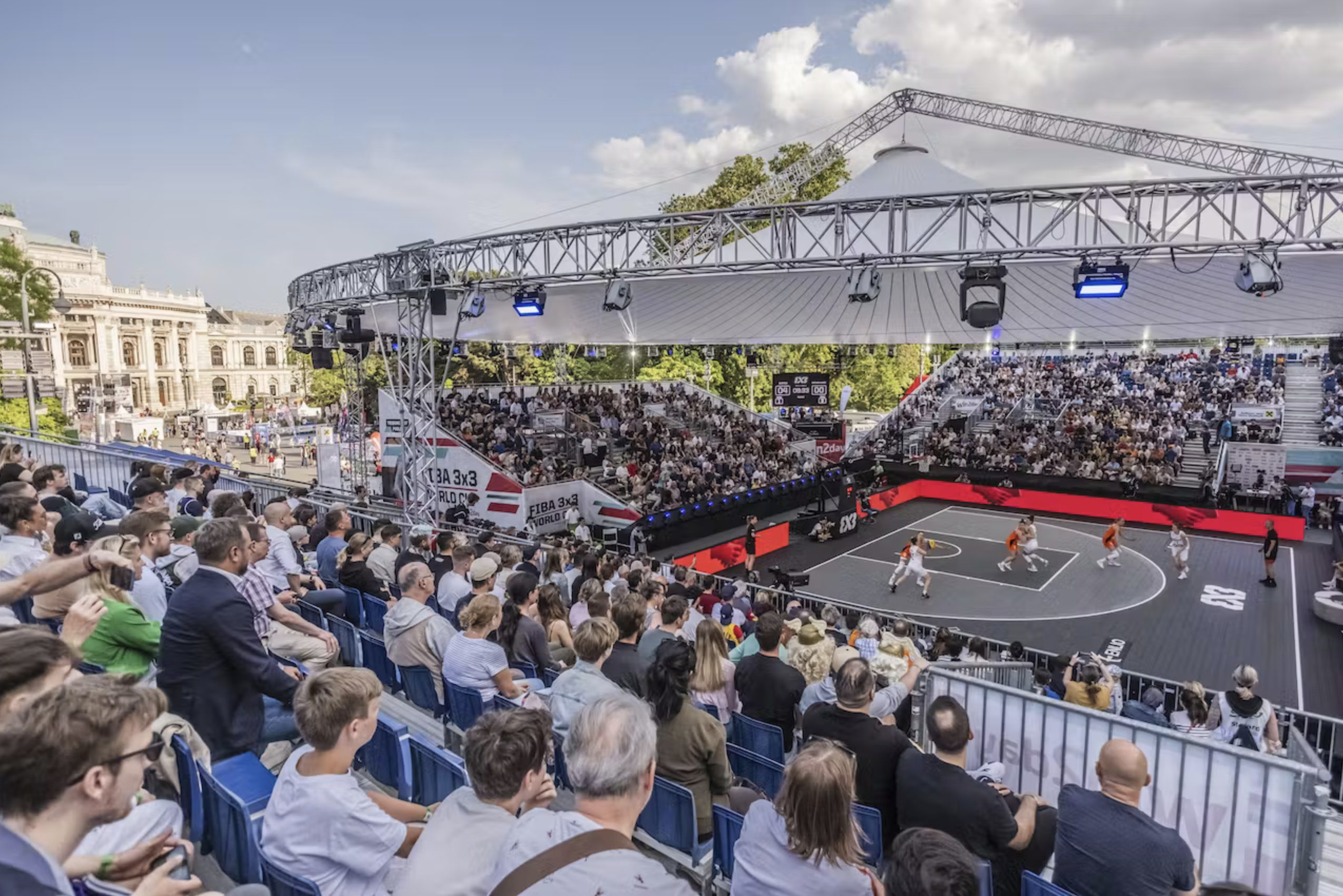
When the 2010 Youth Olympic Games included 3×3 basketball, USA Basketball Chief Executive Officer Jim Tooley told colleagues that the half-court discipline would be a full Olympic sport someday.
“Some people thought I was crazy, but it’s really a great event,” Tooley recalled last week as the U.S. and nearly two dozen other countries started group play in this year’s FIBA 3×3 World Championships in Austria, the latest worldwide event as the sport grows in popularity around the globe and gives FIBA, basketball’s international federation, the chance to reach markets that it may not be able to otherwise.
“The 3×3 world championships allow us to reach new audiences and new audiences discovering basketball,” said Ignacio Soriano, FIBA 3×3 Head of Events and Partners, using this year’s event as an example. “Austria is not a traditional basketball country but now it is suddenly a culture of basketball fandom.”
Sponsored Content
The FIBA 3×3 championships debuted in 2012, this year being the eighth world championship. The 3×3 discipline is played on a half-court with a 10-minute game clock and 12-second shot clock. Play is continuous, as teams “clear” the ball behind the 2-point line following a made basket, defensive rebound or steal. The first team to score 21 points via 1-point field goals or 2-pointers behind the arc wins, or if time expires then the team leading wins.
“It’s such a more instinctual game,” Tooley said. “When you’re running up the court on a fast break in 5×5, you have a little time to make a decision. In 3×3 it’s very fast, play never stops … In 5×5 you can maybe have a bad day out there individually. In 3×3, nobody can hide.”
The 3×3 sport being held outdoors in a smaller venue than regular basketball would need also allows FIBA to bring it to destinations that may not otherwise be hosting basketball world championships. It has been — with the exception of one year in China — exclusively in Europe with the 2019 event in Antwerp and this year’s event in Vienna.
“Our DNA is to play not only outdoors but in iconic locations,” Soriano said. “It’s open to all fans … the location is priority number one when we move events. This is something very important (to FIBA).”
Spreading the sport of basketball through 3×3 also has its benefits. Tooley pointed out the U.S. had group stage games in the first week against Mongolia and Hungary — “FIBA has done a great job in getting the sport in parts of the world the otherwise it would not be. … your traditional dominant countries in 5×5 whether it’s us, Serbia, France — it’s hard to dominate in this game because the margins are so small. It’s gotten the sport more globally popular.”

Its popularity in the U.S. is growing as well. The men’s team at this year’s world championships includes former BYU star Jimmer Fredette as the men lost 21-19 to powerhouse Serbia in the gold medal game. The women’s team includes collegiate stars Cam Brink of Stanford and Hailey Van Lith, formerly of Louisville and now of LSU, with Brink taking home MVP honors as the women beat France 16-12.
But while the U.S. has some big-name players, that does not guarantee success in 3×3. Sunday’s gold was the first for the U.S. women since 2014, although it did win gold at the 2020 Olympic Summer Games in Tokyo. The men’s team has only won one world title, in 2019, and did not qualify for the 2020 Olympics. Past FIBA champions include the Qatar men in 2014 and Czech Republic women in 2016.
“Over the past years we have opened new markets and new competitions,” Soriano said. “It’s something that we are absolutely proud of in this regard.”












 Copyright © 2025 by Northstar Travel Media LLC. All Rights Reserved. 301 Route 17 N, Suite 1150, Rutherford, NJ 07070 USA | Telephone: (201) 902-2000
Copyright © 2025 by Northstar Travel Media LLC. All Rights Reserved. 301 Route 17 N, Suite 1150, Rutherford, NJ 07070 USA | Telephone: (201) 902-2000